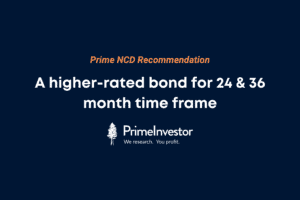In the first of our series on quarterly review & updates, we are covering some of the key changes in our buy/hold/sell calls in our MF Review Tool. When you do so, please make sure you specifically choose the plan that you hold – direct or regular – as our calls may change in some cases between plans of the same fund.
This report is not an exhaustive list of all changes in our calls. It simply seeks to highlight our thought process in giving these calls and reasoning for some changes. You can get your own funds checked in the MF review tool.
You should read our detailed article on how to use our MF review tool before getting into the changes. We would urge all our new subscribers to necessarily go through this. If you are interested in knowing our changes in the last quarter, you can check them here (subscribers only).

Before we discuss about some of the key changes, we would like you to take note of the following:
- New feature added: We get a lot of queries on why we have a certain call (buy, sell, or hold) on some funds. While we analyse every single fund before we issue a call, you can appreciate that it is impossible to provide a distinct reason for every individual fund. However, we do understand your need to know more about the reasons. Hence, starting this review, we have created a unique way to present to you the key quantitative reasoning behind our calls.
This is a new feature and you will find this under the column called ‘Reason’ in the review result page. This column is generated systematically, and highlights the most important quantitative factors that influenced the buy/sell/hold call. We have tried to highlight the negatives if the call is a ‘sell’, highlight the positives in case of a ‘buy’ and what is neutralizing the performance in case of a ‘hold’. Please note that while this represents the most prominent quantitative merits or issues in performance, we do take into account a lot of qualitative aspects as well before arriving at our call.
- Difference in direct and regular: While it is natural for the same fund to have a marginally different rating in direct and regular, we do find instances of a fund with sound portfolio and performance but going down simply because of high expense ratio. In such cases, we think you should get the benefit of holding the fund but with lower cost. Hence, we have called out such funds and asked you to buy them through direct. So, please check our review tool to know if this is applicable to your funds. If you hold such funds, you can continue with them but make fresh investments through direct.
- Where regular is better than direct: There may be stray instances of our giving a hold or sell in direct plan but a buy or a hold in regular plan of the same fund. Please DO NOT shift your investments from direct to regular in such cases. What it means is that the fund has lost out among its peers on a relative basis. So, either use alternate (direct) funds if the call is a sell or continue to hold the investment and avoid fresh investments if it is a ‘hold’.
- Multicap fund status: You need to be aware that we HAVE NOT considered the changed SEBI norms for multicaps (which requires small-cap exposure to be upped by funds) in either the rating or the review. As the issue is being renegotiated with AMCs and fund houses will need to (and are yet to) come up with their changed category/strategy, we continue to treat them as large-cap biased funds (which they are, at present). Please note that it is going to take a while for you to hear from us on this (as we wait to hear from the regulator and AMCs).
Changes in the MF Review tool
With this, let’s move on to some notable changes in this review. The good news is that most of our calls remain the same – i.e., those that were buys have remained so, those that were sells have not seen any improvement in relative performance.
We have qualified some hold calls in the MF Review tool, giving either a timeframe requirement or asked to reduce exposure if it is above a certain limit. We have given such limits in order to reduce the impact on prolonged underperformance or risks to your portfolio, but still allow you to participate in case performance picks up. You can effect this reduction at one go or gradually, and move to another fund of your choice – either one that you hold and is a buy in our review tool, or from Prime Funds.
Debt funds
ICICI Prudential Constant Maturity Gilt – Buy from hold
Aided by the rate fall, this long duration debt fund has steadily moved up in its performance metrics to a ‘buy’ in direct and regular plans. While it might seem neck-to-neck in current performance with the other gilt fund from the same house, a far lower expense ratio enjoyed by constant maturity funds compared with gilt funds has given this fund an edge over longer period.
Its risk-adjusted returns and ability to consistently beat category average (88% of the times when 1-year returns were rolled daily for the past 4 years) also makes it a better bet than its gilt peer. It is now a buy candidate along with two other constant maturity funds (one of which is in our Prime Funds list) on which we already have a buy in the MF review tool.
Kotak Bond Short Term – Buy through direct
This low-risk short duration fund has sound metrics but is steadily pulled down by its regular plan expense ratio of 1.14% as opposed to category average of 0.8%. To show the impact, consider the fund’s 8.3% average 1 year return under the direct plan against a 7.4% in the regular plan. Its rating has remained higher under the Direct plan given the lower cost there. Hence, consider making any fresh investments in the fund through the direct plan and hold the present regular scheme (and sell at your discretion when tax treatment is favourable).
SBI Savings – Buy through direct
This money market fund (we club this category with ultra short, low duration and floater) is another instance of the direct plan doing way better than the regular, suggesting that the high expense ratio has been pulling down performance. The fund is otherwise a low-risk option with lower instance of short-term losses compared with peers. With a mix of commercial papers and deposits, its yield is marginally lower than category. It will come across as being more sedate than other performing peers such as HDFC Money Market or ICICI Pru Money Market, but scores over these peers primarily due to lower volatility and lower instances of negative returns.
Hybrid funds
HDFC Hybrid Equity – Reduce exposure to 10%, from hold
In the aggressive hybrid category, HDFC Hybrid Equity has for years together been steadily in the top quartile. But in the past year, returns have been falling behind almost all peers. We had changed our call to a hold owing to this slip. In this rating cycle, the fund has dropped further to 2 stars. On a 1-year rolling basis in the past 3 years, it beats peers less than a third of the time. Its equity calls have dragged, with calls on cyclical and value stocks not paying off. The fund can therefore remain underperforming for the next few quarters.
Given that the hybrid aggressive category itself is getting inconsistent, and that equity and debt needs can be met through other funds, we have changed our call from a hold, to ‘hold and reduce exposure to 10% of your portfolio’. Ideally, it’s better to be discerning with hybrid funds given their uneven performance.
Axis Equity Saver – Buy from hold
We have been very selective in issuing buy calls on equity savings category, given their limited use and inability to generate consistent debt-beating returns. Axis Equity Saver now makes the cut (both in direct & regular), thanks to its ability to manage corrections well. It even bettered the top-rated fund in this category in the March-20 correction. Deft management of equity through derivative calls has helped its consistency, beating the category 86% of the times. Please note that this category of funds have limited use as only seek to beat debt on a post-tax basis, given their equity-like taxation.
UTI Arbitrage (Direct) – Hold from buy
This is one of the rare cases as mentioned earlier in this article, where our call in the regular plan is better than our call in the direct. The problem arises because the direct versions of some funds are much cheaper, especially compared to their regular plans. Given that returns in arbitrage in any case are low, expense ratios make a bigger difference.
UTI Arbitrage’s expense is slightly more expensive by about 3-10 basis points compared to the better-rated funds in the category under direct. It’s higher cost has also pulled down its consistency score. There aren’t several options in this category, since the ones that are consistent and less volatile are few. Even marginal differences in performance metrics can matter. So if you were to choose an arbitrage fund in the direct plan, there are better choices available.
Equity funds
Canara Robeco Bluechip Equity – Buy from hold
In the large-cap category, we are selective since the Nifty 100 proves a better alternative in most cases. Canara Robeco Large-Cap, though, is now a buy in both direct and regular, taking the total number of large-cap funds we have a buy on to three. The fund has been steadily improving in performance (in line with other equity funds from the AMC).
We have been wary of changing our call on the fund earlier, given the nature of its category. But sustained strong performance makes it worthy now. The fund is among the few that is delivering reasonable alpha over the index, while being less volatile as well. Its short-term and long-term outperformance against the Nifty 100 has been improving from early 2019 onwards and the fund is now beating the index by a margin better than any other large-cap fund. Do note, however, that the AMC takes similar stock calls across its equity funds. If you already hold equity funds from the same AMC, you may be duplicating so run a portfolio check first.
IDFC Tax Advantage (ELSS) – Sell from hold
This aggressive tax-saving fund captures upsides well but loses it by failing to contain downsides. Its high volatility also makes it a see-sawing performer (in direct & regular). Barring short spurts of outperformance, it has been steadily underperforming category peers even on a rolling 3-year return basis. An average 44% holdings in mid and small-cap over longer periods compared with average 25% in category has meant that it took a prolonged hit in the mid and small-cap correction of 2019 and hasn’t managed to bounce back from that, despite the rally post March.
HDFC Growth Opportunities – Sell from hold
This large-and-midcap fund has never been a great performer. But its 1-year consistency was at least slightly better than some other funds. But we have observed no performance improvement in either this or any other metric over time. Even in the current market rally, its 1-year return falls short of peer average. Its average 3-year return is worse than peers by a good 4 percentage point margin and it barely delivers much on a risk-adjusted basis. Holding on to the fund can therefore be futile and cause more opportunity loss. For this reason, we have moved the call to a sell in both regular and direct.
Reduce exposure to 10% of portfolio for:
- Franklin India Equity
- Quantum Long Term Equity
- HDFC Equity
- Franklin India Focused Equity
For the above top performers of yesteryears, we had given a long rope to underperformance due to their strategy and the AMC’s focus on long-term, value-driven stocks. Their portfolios suggest that any performance turnaround is going to take a while longer. The underperformance has been long and the margin of this underperformance compared to the category is wide at 3-4 percentage points on a 3-year basis and more than double that on a 1-year basis. This means that it will be harder to recoup the opportunity loss even if performance does improve. For this reason, we have given a call to reduce the impact of such underperformance on your portfolio.
L&T India Value – Sell from hold
This once aggressive mid-cap biased fund lost the plot ever since it moved to more large caps (under the value category) post SEBI categorization. Pre-categorization, it was not true value although labelled itself so. Post SEBI categories, it had to shed some of its more aggressive growth-oriented midcaps and shift to large caps. And with value underperforming up until the 2020 correction, the fund trailed its peers (like many other value funds, we compare this fund with multicaps) and shows highly inconsistent performance now. It now beats the Nifty 500 just 19% of the times (direct plan) on a rolling 1-year basis.
You may also want to look at the change in our ratings. Please note that our Prime Ratings is not a recommendation. It only tells you where your funds’ performance stand in relation to peers. Only our review tool is our recommendation on a fund. Our review tool is available for trial users and subscribers only.
P.S. Our next quarterly review report series will be on Prime funds – our recommended list and the changes there. This is exclusively for subscribers only. Subscribe today if you haven’t, to access the reports.




13 thoughts on “Quarterly review – Changes in buy/ sell/ hold calls in our fund review tool”
Considering 50:50 allocation to equity and debt would reduce exposure to 10% of the portfolio mean 5% of total portfolio?
If you are asking about reducing a specific fund to 10% – it means if your fund is over 10% of total portfolio reduce it to 10%. Vidya
Canara Robeco Large Cap – Buy from hold.
I don’t see this fund in Mutual Funds Explorer Tool.
Hello sir,
Sorry, our mistake 🙂 Canara Robeco Bluechip Equity – it is a large-cap fund, and we mistakenly put that in the name. Thanks for pointing it out.
Regards,
Bhavana
In review of Mutual funds and a Fixed income investments, Primeinvestor remains the best.
Thanks, sir!!
Regards,
Bhavana
“Reduce exposure to 10% for:
Franklin India Equity
Quantum Long Term Equity
HDFC Equity
Franklin India Focused Equity”
Does it mean that you have investments for Rs100, you reduce it to Rs10 now?
Hello sir,
No, it means reduce exposure of the fund to 10% of portfolio. I’ve edited the post to reflect this. Thanks!
Regards,
Bhavana
Hi. Am not finding reason crab in review results page. Where it exactly there
Hello sir,
It should be in the final column on the results page. If you are unable to see it still, please try clearing your browser cache. If the issue persists, please write to us using this form: http://www.primeinvestor.in/contact-us.
Thanks,
Bhavana
Is there a way to see the change in rating for funds? How can I see only funds for which the rating has changed?
Hello sir,
No, at present, we do not have the feature of showing a fund’s previous ratings. We are considering adding this aspect in the future 🙂
Thanks,
Bhavana
Thank you. Really appreciate for the responsiveness of your team. Would look forward to see history of fund ratings.
Comments are closed.